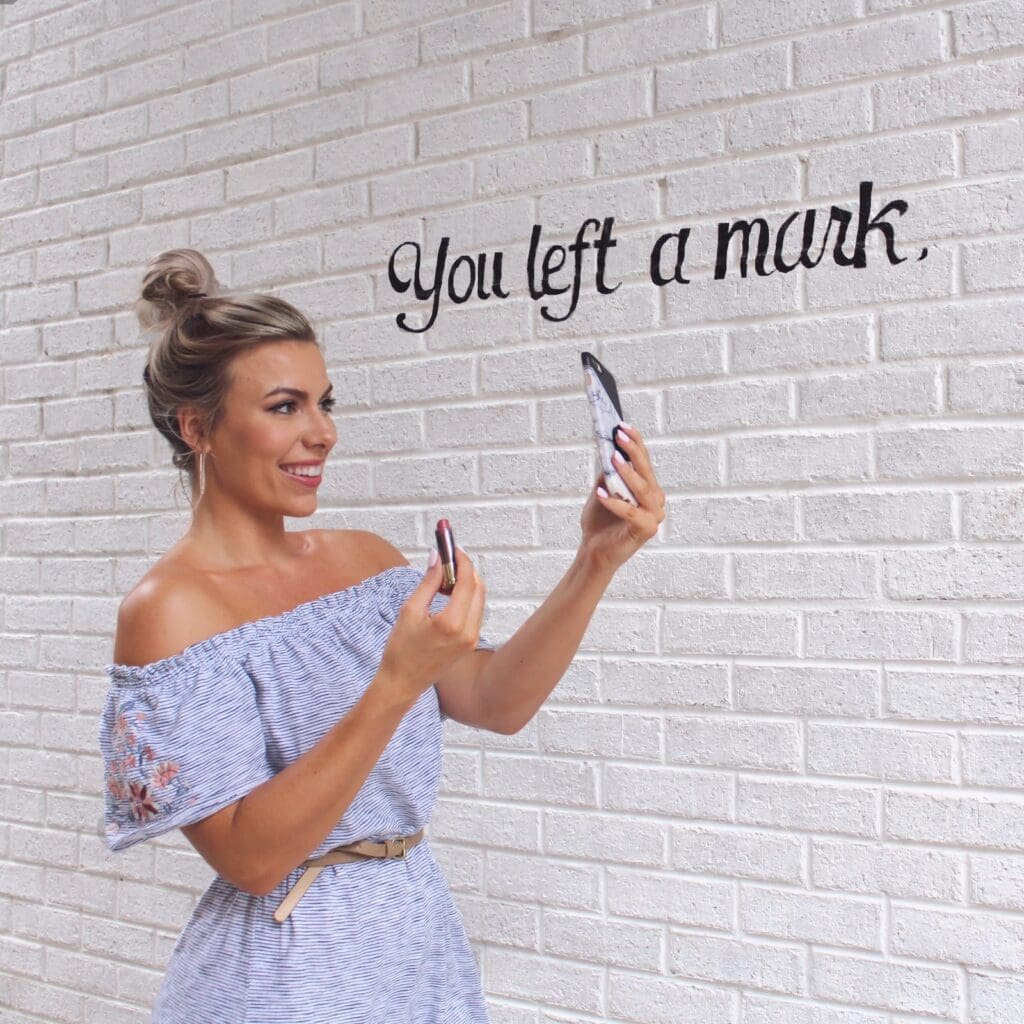How Do Social Media Influencers Manage Their Money?
Did you know 86% of young Australians want to be influencers? In fact, according to a 2018 study conducted by popular phone brand OPPO, 46% of Australians aged 18-24 indicated that travel blogging as their full-time career preference, followed by food blogging (16%) and fashion blogging (9%).
It comes as no surprise as to why these Gen Z kids are considering dropping the textbooks and picking up a camera. Influencers, if successful, are not only capable of earning millions of dollars a year, but they also get to indulge in certain perks. Multiple holidays a year, paid brand trips, free products, a pretty easy job (let’s be honest), and sweet moolah… Who doesn’t want that?
That being said, no matter how much one earns, the perils of the Australian Taxation Office (ATO) cannot be escaped. As a working citizen in Australia, you must pay tax, and that rule is no different for influencers. One of the conveniences of being an average, non-Instagram famous citizen, is that your employer ensures the right amount of tax is deducted from your pay by providing you with a tax declaration form that they lodge for you. You sign, they send, and you’re on your way working and paying your taxes. For influencers, this process is a little more complex, and get a little messy if one isn’t scrupulous. Before we get into the nitty-gritty of tax, let’s take a look at how much influencers actually earn.
How much do influencers earn?
If you’ve seen 2019’s hit Netflix Documentary Fyre: The Greatest Party That Never Happened, then you probably have a figure like $250,000 floating around your head. That’s how much Kendall Jenner was reportedly paid for posting an orange square on Instagram. However, in reality, this isn’t the case (for the majority). The amount that influencers can charge, and in turn how much they are capable of earning, depends on two important factors.

The size of the following
In other words, how many followers they have. The greater the number of followers an influencer has, the more expansive their influence. Therefore, an influencer with a larger amount of followers can charge more for a sponsored post as they are reaching more people. That is unless their followers are fake. That’s right – you can be Insta-famous too as long as you’ve got the money. It’s pretty easy these days to pick up 1,000 extra followers for as little as $10. This trend of buying fake followers has meant that brands must practice due diligence when investing in influencers. According to Hootesuite, the basic rate for paying influencers is $100 for every 10,000 followers.
The engagement rate
Now, while some might have a large following, that doesn’t necessarily mean their audience is very active. Active audiences engage with influencers. They like, comment and view every post to show their interest. This is obviously a more worthwhile audience than one that simply scrolls past. Therefore, influencers may disclose certain metrics in which they use to negotiate payments. The higher the levels of engagement that they can report from their following, the higher they can charge.
How do social media influencers earn money?
Depending on their special interests, influencers can earn money from a variety of avenues. From mummy bloggers to beauty gurus, there is a range of ‘genres’ in which an influencer can specialise, and target their audience. Of course, there is also just the ‘aesthetic influencer’, a post-Tumblr type that just has a ‘look’ or ‘aesthetic’ that inspires others. Majority of the time, influencers earn money through sponsored posts. This is when an influencer endorses a brand in a post in exchange for funds or goods. However, increasingly, influencers have been expanding their revenue streams by branching out into the following:

Selling digital products such as e-books
Publishing isn’t as costly as it used to be, especially in the digital age. E-books are notably easier to produce and distribute in our modern world. Plus, if you’ve got the platform to promote your own work, then you can directly plug to your target audience.
Podcast subscriptions
Creating podcasts has become another common ‘day job’ amongst influencers which enables them to earn money from subscription serves. As a bonus, their loyal following gets to interact further with them.
Brand ambassadors
Much like paid sponsorships, though a little more on-going and dedicated, brand ambassadors get to have a continuous flow of money from a brand in which they trust.
Starting their own brand
Many influencers know their role will not last forever. That’s why a lot of them develop their own business as a back-up, to ensure the money keeps flowing even after they stop posting.
Highest Paid Influencers
Have you ever been curious about who tops the list as the highest-paid influencer? According to CNBC, the following celebrities earn the highest amount on record for sponsorship deals.
1. Kylie Jenner
As a member of the Kardashian clan and one of the most instantly recognised people on the planet, it’s no wonder that Kylie Jenner can charge an estimated $1 million dollars per sponsored post. With 139 million followers at reach, the hefty price tag is undoubtedly worth it. No wonder she got to that billion so fast!
2. Selena Gomez
Although slightly inactive on Instagram throughout 2019, Selena was earning top dollar in 2018 while posting to her 150 million Instagram fans. During this time, she was earning around $800,000 per sponsored post. Imagine being able to afford a house in one pay-cheque.
3. Cristiano Ronaldo

This one may surprise some. Cristiano Ronaldo reportedly earns $750,000 per sponsored posts. Unsurprisingly, most of these sponsorships come from sporting brands. He’s really reaching, or should I say kicking, his goals.
4. Kim Kardashian
This one comes as no surprise. With 143 million followers (which is actually more than Kylie), it’s no wonder Kim can charge approximately $720,000 per post on Instagram. Not that either sister needs it, they both have successful businesses which they run.
5. Beyonce Knowles
Earning a little spare change on the side of her incredibly successful music career, Bey earns a humble $700,000 per sponsored post to her 129 million followers. Not bad, right?
How do influencers pay tax?
Regardless of if you are a musician, celebrity, athlete, or influencer, in Australia, you must pay tax. In Australia, as part of the newly introduced (as of 1st of July 2019) ‘Instagram Tax’, influencers must pay tax on income made through sponsorships and endorsements including non-cash benefits.
This change has come as the Treasury has identified loopholes within the former system. According to Treasury discussion papers in the Financial Review, there was evidence of influencers minimising their personal assessable income by licencing their fame or image to third party companies and entities. As their image is used for profit in which they only earn a small percentage (if any), influencers can count this as a loss and lessen the percentage of tax payable. Within the new tax regime, influencers would not be able to discount this revenue. It would be added to their taxable income and taxed accordingly.
How do influencers manage their taxes?
If you earned more than $600 this year as an influencer, you would need to pay tax on your income. But how much? And what if you’ve got multiple revenue streams, sponsorship deals, and brand collaborations. Accounting for all of these payments involves pretty scrupulous bookkeeping, particularly if you were paid by multiple vendors. And we said being an influencer is easy!
Like other residents within Australia, influencers must follow the Individual Income Tax Rates specified by the ATO. However, there are certain deductibles influencers can outline upon completing a tax return. As the following items are expenses directly related to the profession of an influencer, they can be claimed as deductions as long as the influencer was not reimbursed and spent his/her own money, and as long as they have kept a record of the expense.
- Internet Costs
- Computer and camera equipment (as long as the camera is for work only)
- Communication equipment (phones)
- Office equipment
- Out-sourced design and advertising

The general rule is, anything that is not being used privately, domestically, or for recreation, is a work expense.
The importance of doing tax returns accurately
No doubt, managing your taxes as an influencer is a slightly more complicated affair. Especially without a knowledgeable accountant or bookkeeper to help you along the way. However, incorrectly completing a tax return can result in harsh consequences for the individual. That’s why it’s important to amend any mistakes or inaccurate information as soon as possible. This is done by contacting the ATO.
What happens if you wait and fall behind?
The ATO is authorised to impose administrative penalties to those that make false or misleading statements, fail to withhold amounts to the ATO and fail to meet tax obligations. Though the penalties amount to around $110-$210, one might have to pay 5-20 times the penalty unit depending on the offence. Did you just freak out slightly about your tax return? Time to get an accountant, or bookkeeper!
As much as we envy influencers and their financial situation, tax time would not be fun for them.
Are your finances as stressful as an influencer, or are you a social media influencer yourself? Shoebox can help! Shoebox provides bookkeeping services to get your income and expenses recorded and in order, to get you ready for the next tax cycle.
To speak to one of our qualified bookkeeping and tax specialists, get in touch with us today.